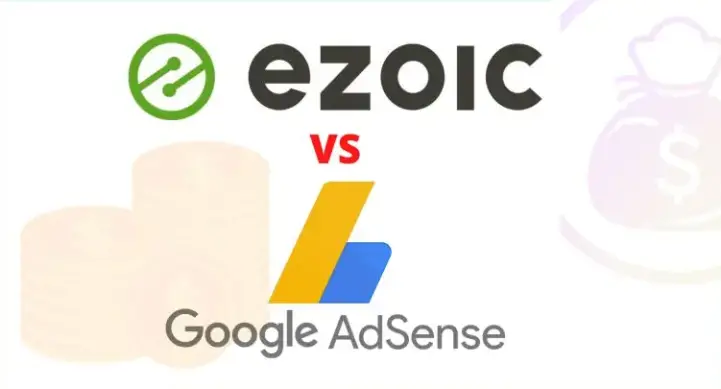Imagine this: You launch your website with high hopes, attracting a stream of visitors who show interest in your content with a low returning Visitors index.
What happens next?
How do you ensure that those visitors keep coming back for more? This is where the power of returning visitors comes into play.
In this blog post, we’ll explore the tactics that can unlock the potential of returning visitors and drive repeat traffic to your website.
Tricks for Boosting Website Returning Visitors Rate

Easy ways to increase the rate of returning visitors to your site:
- Personalized Content Recommendations
- Email Marketing Campaigns
- Loyalty Programs and Exclusive Offers
- Remarketing and Retargeting Campaigns
There are many possible ways of increasing the rate of returning visitors to your site, but I will focus on the easy ways; let’s go……
1: Personalized Content Recommendations
Let me take you back to a time when I stumbled upon a website that seemed to know exactly what I wanted. It recommended articles, products, and content that resonated with my interests.
That personalized touch made all the difference, and I found myself returning to the site time and time again. Personalized content recommendations are a game-changer when it comes to driving repeat traffic.
Personalized content recommendations leverage user data and past interactions to deliver tailored suggestions to each visitor. By analyzing their browsing history, preferences, and engagement patterns, you can create a unique user experience that keeps them coming back for more.
Whether it’s displaying related articles, recommending products based on previous purchases, or sending personalized notifications, these recommendations create a sense of relevance and familiarity, making visitors feel seen and understood.
In order to implement personalized content recommendations effectively, you can utilize various tools and techniques.
Consider using machine learning algorithms to analyze user data and generate accurate recommendations.
Optimize your website’s navigation and design to ensure that these recommendations are prominently displayed.
Additionally, make sure to regularly update and refresh your recommendation engine to reflect changes in user preferences and trends.
2: Email Marketing Campaigns
Ah, the power of email. It has been a tried-and-true marketing tool for years, and its potential for driving repeat traffic should not be underestimated.
Allow me to share a personal experience that illustrates the impact of a well-executed email marketing campaign.
A few months ago, I signed up for a newsletter from a website that caught my attention. Little did I know that I was about to embark on a journey of engaging content and enticing offers. The emails I received were not mere promotions; they were valuable resources, providing updates, insights, and exclusive content.
Each email felt like a friendly nudge to revisit the website, and I found myself eagerly clicking through to explore more.
To build an effective email marketing campaign, start by segmenting your audience based on their preferences, demographics, and behaviors. This will allow you to deliver targeted content that resonates with each segment. Craft compelling and personalized email content that goes beyond sales pitches, offering valuable information, tips, and exclusive offers.
Experiment with different email formats, such as newsletters, product updates, or curated content, to keep your subscribers engaged. Don’t forget to optimize your email delivery, considering factors like timing, frequency, and email subject lines.
3: Loyalty Programs and Exclusive Offers
Now, let’s talk about loyalty. Everyone loves to feel appreciated and rewarded, and your website visitors are no exception. Loyalty programs and exclusive offers are effective tactics for driving repeat traffic and fostering a sense of belonging among your audience.
Think back to a time when you were a loyal customer of a particular brand. Perhaps they had a point-based rewards system, or they offered exclusive discounts to repeat customers. How did it make you feel? It’s likely that you felt valued and motivated to continue supporting that brand.
Implementing a loyalty program for your website can have the same effect. By offering rewards, discounts, or special perks to returning visitors, you create a sense of loyalty and incentivize them to keep coming back.
Consider designing a point-based system, where visitors earn points for each action or purchase they make. These points can then be redeemed for discounts, exclusive access, or even personalized experiences.
Track customer progress and provide updates on their loyalty status, making them feel recognized and appreciated.
Promote the exclusivity of your loyalty program and exclusive offers to create a sense of FOMO (fear of missing out). Highlight the benefits of joining, such as early access to new products, members-only content, or VIP customer support.
Communicate these perks through your website, email marketing campaigns, and social media channels to ensure maximum visibility.
4: Remarketing and Retargeting Campaigns
Have you ever visited a website, only to see ads from that website following you around the internet? That’s the power of remarketing and retargeting campaigns. Allow me to share a personal experience that demonstrates how effective these campaigns can be.
A while back, I was browsing an online store, searching for a particular product. I didn’t make a purchase at that time, but to my surprise, I started seeing ads for the exact same product on various websites I visited afterward.
It was as if the website was reminding me of what I had left behind, and eventually, I went back and completed the purchase.
Remarketing and retargeting campaigns work by tracking the behavior of visitors on your website and displaying targeted ads to them on other platforms. This keeps your brand top-of-mind and encourages them to return and convert.
To set up successful remarketing campaigns, start by segmenting your audience based on their behavior and interests. Create visually appealing and compelling ads that remind visitors of their previous interactions with your website.
Consider offering incentives, such as discounts or free shipping, to entice them to return and make a purchase. Use tracking pixels and conversion tracking to measure the effectiveness of your campaigns and optimize them over time.
FAQ: Unlocking the Potential of Returning Visitors

1. What report shows the percentage of site traffic that was visited previously?
The report that shows the percentage of site traffic that visited previously is commonly referred to as the “New vs. Returning Visitors” report.
This report provides insights into the composition of your website’s audience by distinguishing between new visitors (those who are visiting the site for the first time) and returning visitors (those who have visited the site before).
The “New vs. Returning Visitors” report typically displays the percentage or proportion of total site traffic that consists of new visitors versus returning visitors.
This information can be valuable for understanding user engagement, loyalty, and the effectiveness of your marketing efforts in attracting new visitors to your website.
2. Which default traffic source dimensions does google analytics report for each website visitor?
Google Analytics reports several default traffic source dimensions for each website visitor. These dimensions provide insights into how visitors find and access your website. The default traffic source dimensions include:
- Source: This dimension indicates the origin of the traffic, such as a search engine (e.g., Google, Bing) or a website (e.g., Facebook, Twitter) that referred the visitor to your site.
- Medium: The medium dimension categorizes the general type of traffic source, such as organic search, referral, social media, or email.
- Campaign: If you use tracking parameters in your URLs, this dimension captures the specific marketing campaign associated with the visitor’s arrival on your site. It is particularly useful for analyzing the effectiveness of your marketing efforts.
- Keyword: This dimension shows the specific search terms or keywords that visitors used when coming from a search engine. Note that due to privacy concerns and search engine changes, keyword data may be limited or unavailable in some cases.
- Ad Content: If you run paid advertising campaigns, this dimension reveals the specific ad or creative variant that drove the visitor to your website.
- Ad Campaign: Similar to the campaign dimension, the ad campaign dimension provides information about the specific advertising campaign associated with the visitor’s arrival.
- Ad Group: In the context of paid advertising, this dimension indicates the specific ad group within a campaign that generated the visitor’s traffic.
- Referral Path: This dimension displays the full URL of the page that referred the visitor to your website. It can help identify the specific pages or websites that drive traffic to your site.
These default traffic source dimensions in Google Analytics enable you to analyze and understand the sources and mediums through which visitors arrive at your website. By leveraging this data, you can evaluate the effectiveness of your marketing channels, optimize your campaigns, and make informed decisions to drive more targeted traffic to your site.
3. Which reports indicate how traffic arrived at a website?
Google Analytics provides several reports that indicate how traffic arrived at a website. These reports offer valuable insights into the sources, mediums, and campaigns driving visitors to your site. Here are some of the key reports you can use to analyze traffic acquisition:
1. Acquisition Overview Report:
This report provides an overview of the different channels through which users accessed your website. It includes data on sessions, users, bounce rate, and more, segmented by channels such as organic search, direct, referral, social, and paid search.
2. Channels Report:
The Channels report provides a detailed breakdown of the traffic sources grouped into channels. It shows metrics such as sessions, bounce rate, conversion rate, and goal completions for each channel. You can analyze how each channel contributes to your website’s overall performance.
3. Source/Medium Report:
This report offers insights into the specific sources and mediums driving traffic to your website. It shows data on sessions, new users, bounce rate, and more, segmented by the combination of source and medium. You can identify which search engines, social media platforms, websites, or other sources are sending visitors to your site.
4. All Traffic Report:
The All Traffic report provides a comprehensive view of the various traffic sources sending visitors to your website. It includes data on sessions, users, pages per session, and average session duration. You can explore dimensions such as source, medium, campaign, keyword, and more to gain a deeper understanding of your website’s traffic sources.
5. Referrals Report:
This report focuses specifically on referral traffic, showing the websites and URLs that refer visitors to your site. You can see metrics such as sessions, pageviews, and average session duration for each referral source. It helps you identify external websites or pages that are driving traffic to your site.
6. Campaigns Report:
The Campaigns report allows you to analyze the performance of your marketing campaigns. It shows data on sessions, conversions, and goal completions for each campaign, allowing you to measure the effectiveness of your advertising or promotional efforts.
These reports in Google Analytics provide comprehensive insights into how traffic arrived at your website. By analyzing the data in these reports, you can make informed decisions about optimizing your marketing channels, refining your campaigns, and attracting targeted traffic to your site.
4. Auto-tagging is used to collect data from what kind of traffic?
Auto-tagging is used to collect data specifically from paid traffic sources. When enabled, auto-tagging adds unique tracking parameters to the destination URLs of your advertising campaigns. These parameters contain information that helps Google Analytics identify and categorize the traffic coming from your paid campaigns.
Auto-tagging is primarily used with platforms such as Google Ads (formerly known as Google AdWords) and Bing Ads. By enabling auto-tagging in these advertising platforms, the tracking parameters are automatically appended to the URLs of your ads.
When users click on your ads and land on your website, Google Analytics can then capture and attribute that traffic to the corresponding paid campaign.
Auto-tagging provides more detailed and accurate data about your paid campaigns in Google Analytics. It enables you to track metrics such as clicks, impressions, conversions and cost data at a granular level.
With this information, you can analyze the performance of your paid campaigns, measure return on investment (ROI), and optimize your advertising strategies.
It’s important to note that auto-tagging does not apply to organic search traffic or other non-paid sources. To track and analyze data from organic search or other sources, you rely on other tracking methods, such as the default tracking parameters used by Google Analytics or manual tagging with UTM parameters.
5. What report shows which web pages get the most traffic and highest engagement?
The report that shows which web pages get the most traffic and highest engagement in Google Analytics is the “Behavior” report. Within the Behavior report, you can find two specific reports that provide this information:
1. All Pages Report:
The All Pages report displays a list of all the pages on your website and provides valuable metrics such as pageviews, unique pageviews, average time on page, bounce rate, and exit rate.
This report allows you to see which pages receive the most traffic and engagement. You can sort the data by various metrics to identify the top-performing pages in terms of traffic volume or engagement metrics.
2. Landing Pages Report:
The Landing Pages report focuses specifically on the pages where visitors enter your website. It provides insights into the first pages users land on when they arrive at your site. This report shows metrics such as sessions, bounce rate, and goal completions for each landing page.
By analyzing this report, you can identify which pages are attracting the most traffic and effectively engaging visitors from the very beginning of their journey.
In both of these reports, you can drill down into specific dimensions, such as source/medium, campaign, or device category, to gain further insights into the traffic sources or marketing campaigns that contribute to the performance of each web page.
These reports in the Behavior section of Google Analytics allow you to understand which web pages on your site are receiving the most traffic and are driving high engagement.
By analyzing the data from these reports, you can identify opportunities to optimize your top-performing pages, improve the user experience on lower-performing pages, and make data-driven decisions to enhance the overall performance of your website.
Conclusion
Returning visitors are the lifeblood of a successful website. By implementing tactics that unlock their potential, you can drive repeat traffic and build a loyal audience. Personalized content recommendations, email marketing campaigns, loyalty programs, and remarketing campaigns are all powerful tools at your disposal.
Experiment, iterate, and analyze the results to find what works best for your specific audience and website. Remember, building relationships with your visitors takes time and effort, but the rewards of unlocking the potential of returning visitors are immeasurable.
So, go ahead, put these tactics into action, and watch your website thrive with loyal and engaged visitors.
Discover more from Digital Wealth Guru
Subscribe to get the latest posts sent to your email.









Comments